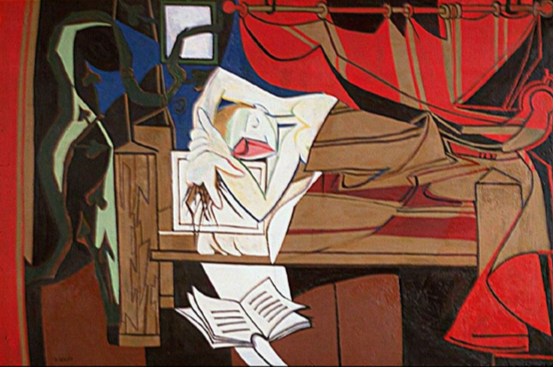The Women Behind the Canvas: Picasso’s Muses and Their Influence on His Work
- Seonyeong Choi

- Oct 23
- 3 min read

The women in Picasso’s life profoundly influenced his art. Dora Maar, a photographer, played a crucial role during the Spanish Civil War period, inspiring the creation of Guernica and serving as the muse for the Weeping Woman series. Her passionate personality and emotional depth are vividly reflected in Picasso’s paintings, particularly in Portrait of Dora Maar, which depicts bold makeup, sharp fingers, and flame-like hair. Dora not only inspired him emotionally but also politically, heightening his awareness of war and human suffering. Her influence is evident in Guernica (1937), Picasso’s monumental response to the bombing of the Basque town.
During the creation of Guernica, Dora photographed the painting’s evolution, documenting Picasso’s creative process. Her surrealist perspective added symbolic and dramatic depth to his work. She also introduced Picasso to the cliché verre technique, which combined photography and printmaking, expanding his artistic experimentation. Although Dora was the model for the Weeping Woman series, she viewed it not as her portrait but as a metaphor for the tragedy of the Spanish Civil War. Picasso deeply admired her intellect, often calling her “the genius of photography.” Their relationship was one of mutual artistic stimulation and emotional intensity.

Françoise Gilot, a painter and writer, later became Picasso’s creative partner, guiding his art in a new direction. Their intellectual and artistic bond revitalized Picasso, inspiring him to explore lithography and other media more seriously. From 1945 onward, he created numerous lithographs, many featuring Gilot’s portrait. At just 21, Gilot’s independent and vibrant spirit reinvigorated the 60-year-old artist, motivating him to experiment across painting, printmaking, sculpture, and ceramics. Unlike his previous lovers, Gilot was an equal collaborator she challenged Picasso’s ideas, offered honest critiques, and maintained her own artistic identity. Ultimately, she became the only woman to leave Picasso, later establishing her own successful career and artistic voice beyond his shadow.
Maar experienced deep psychological distress, and other women endured similar pain at the end of their relationships. Picasso often expressed a misogynistic duality, describing women as either “goddesses or doormats.” Behind his artistic genius lay a darker side his tendency to exploit and emotionally dominate those closest to him a tension that became intertwined with his creative output.
In conclusion, Dora Maar and Françoise Gilot each represented a different period of Picasso’s life. I believe that these two women were not merely ‘muses,’ but significant figures who inspired transformations in Picasso’s art. Their stories show how complex and painful it was to live alongside a great artist. What struck me most was Picasso’s remark that women were either “goddesses or doormats.” For him, women seemed not just to be objects of love, but also the language and instruments of his art. Through their faces, bodies, and emotions, he expressed the anxieties of his time and the depths of the human psyche. Dora Maar embodied passionate tragedy, while Gilot symbolized intellectual independence and vitality. In my view, the women in Picasso’s paintings were far more than mere muses. They reflected themselves, the era they lived in, and the dualities of human nature creation and destruction, genius and cruelty. I realized that a muse is not merely someone who inspires an artist, but a presence that shares a part of their soul. Maar and Gilot were the women who challenged and changed him, not merely objects behind Picasso’s canvas.



Comments